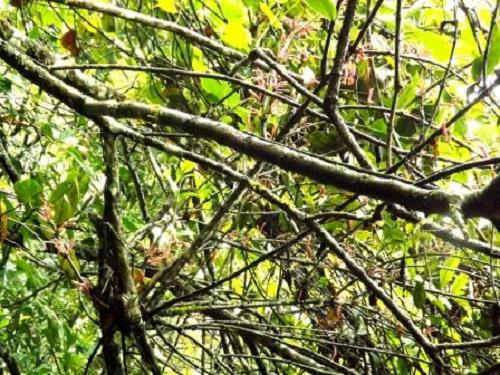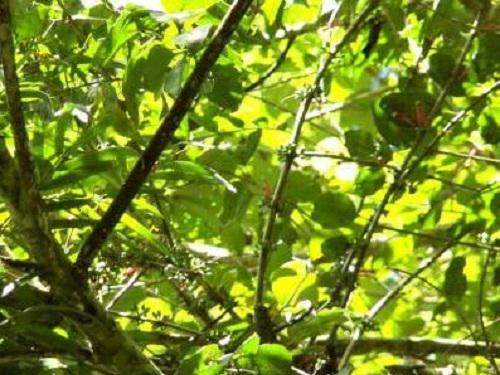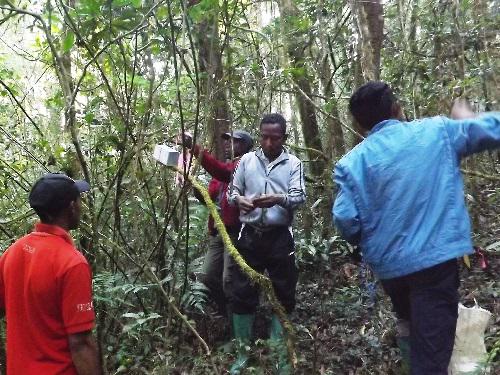Zo Samuel Ella Fenosoa
In the interactions between parasitic plants which grow on tree branches and their seed dispersers, most of the works worldwide have demonstrated the importance of birds in the dispersal of the hemiparasitic plants mistletoes. However, very little is known about mistletoe interactions with primates in term of dispersal. This project conducted in Madagascar will contribute to our understanding of the role lemurs play in mistletoe dispersal. The objectives are: (1) to examine how the temporal synchrony in reproduction and shared lemur mutualists between host trees and mistletoe can influence mistletoe dispersal; (2) and to determine the effect of mistletoe infection on forest regeneration, community structure and diversity around host trees.

Mistletoe with flower.
A majority of plants are adapted for animal dispersal. Mistletoes - hemiparasitic plants - worldwide, except for few species, are primarily dispersed by birds. But, dispersal by mammals such as marsupial, possums and mouse lemurs occurs in some areas. Unfortunately, very few studies about the ecology of the dispersal of mistletoe by primates have been done. In Madagascar, unlike other tropical forests, a large proportion of plants rely on lemurs for seed dispersal due to the low diversity of frugivorous disperser communities such as birds and bats on the island. Dispersal of mistletoe (Bakerella sp.) which is a keystone or staple resource especially for large and endangered lemurs depends on small frugivorous lemurs and birds. In addition, mistletoe infection may also present indirect benefits on ecosystem such as improved seed dispersal rates of parasitized hosts and increased diversity in the infected tree neighborhoods.

Mistletoe with fruit.
Because most lemurs face serious threats, including habitat destruction and hunting for bushmeat, studying the role of lemurs in the dispersal of mistletoe is of crucial importance to increase our understanding of this mutualistic interaction and its influence on forest communities. This project will contribute to our understanding of the role lemurs play in the dispersal of mistletoe (Bakerella sp.) in Madagascar by examining how the temporal reproduction synchrony and shared lemur mutualists between host trees and mistletoe can influence mistletoe dispersal and the effect of mistletoe infection on forest regeneration, community structure and diversity.

Guides trapping lemur.
To achieve the goal of this project, we will conduct the fieldwork for two field seasons in 2018 and 2019 in Vatoharanana and Valohoaka in Ranomafana National Park, Madagascar. After localizing all infected trees in the 1-ha plot in the study sites, we will choose and watch fruiting trees infected by fruiting mistletoe during the day and at night to observe the feeding behavior of all frugivore visitors, we will especially note the number of fruits of host and/or mistletoe removed. We will monitor the dispersal of other tree species in the plot in function of distance from infected trees by using seed traps. We will also sample the vegetation surrounding infected trees and uninfected ones of the corresponding species.